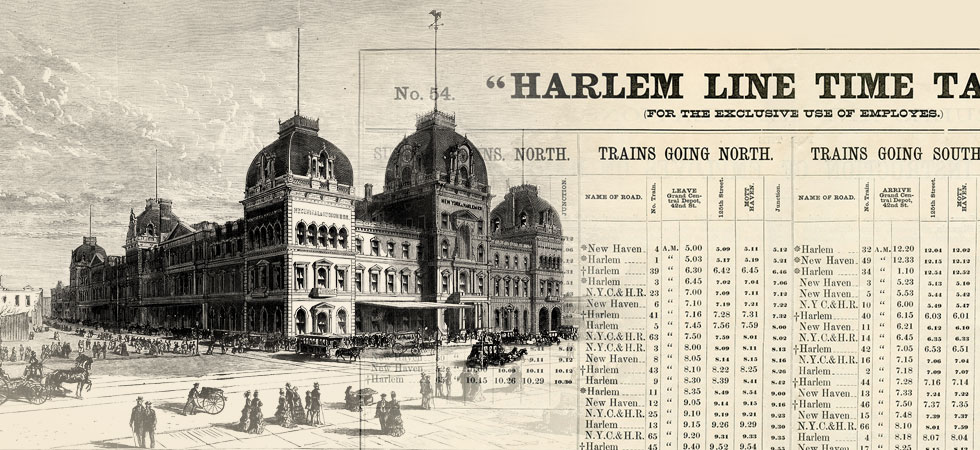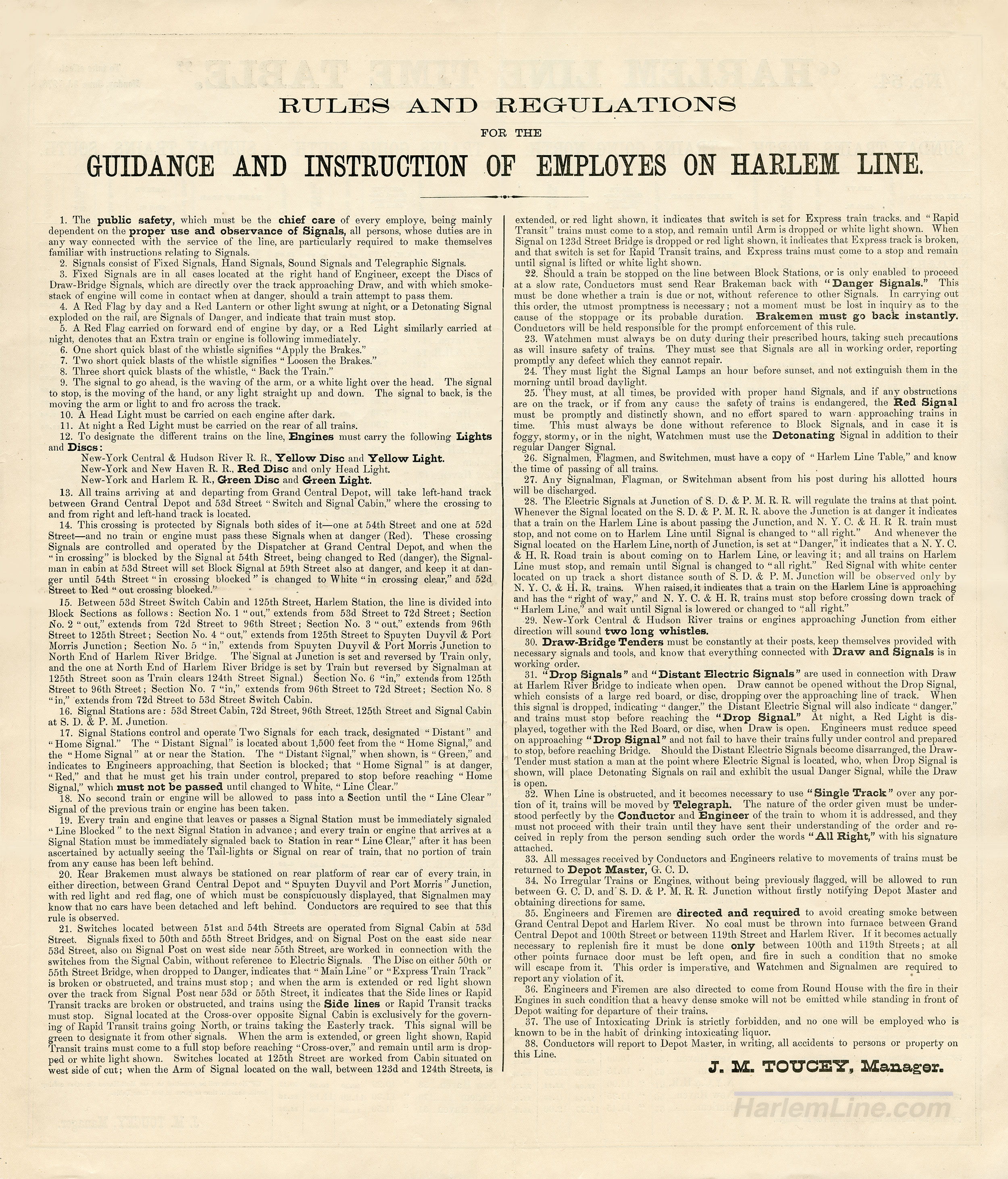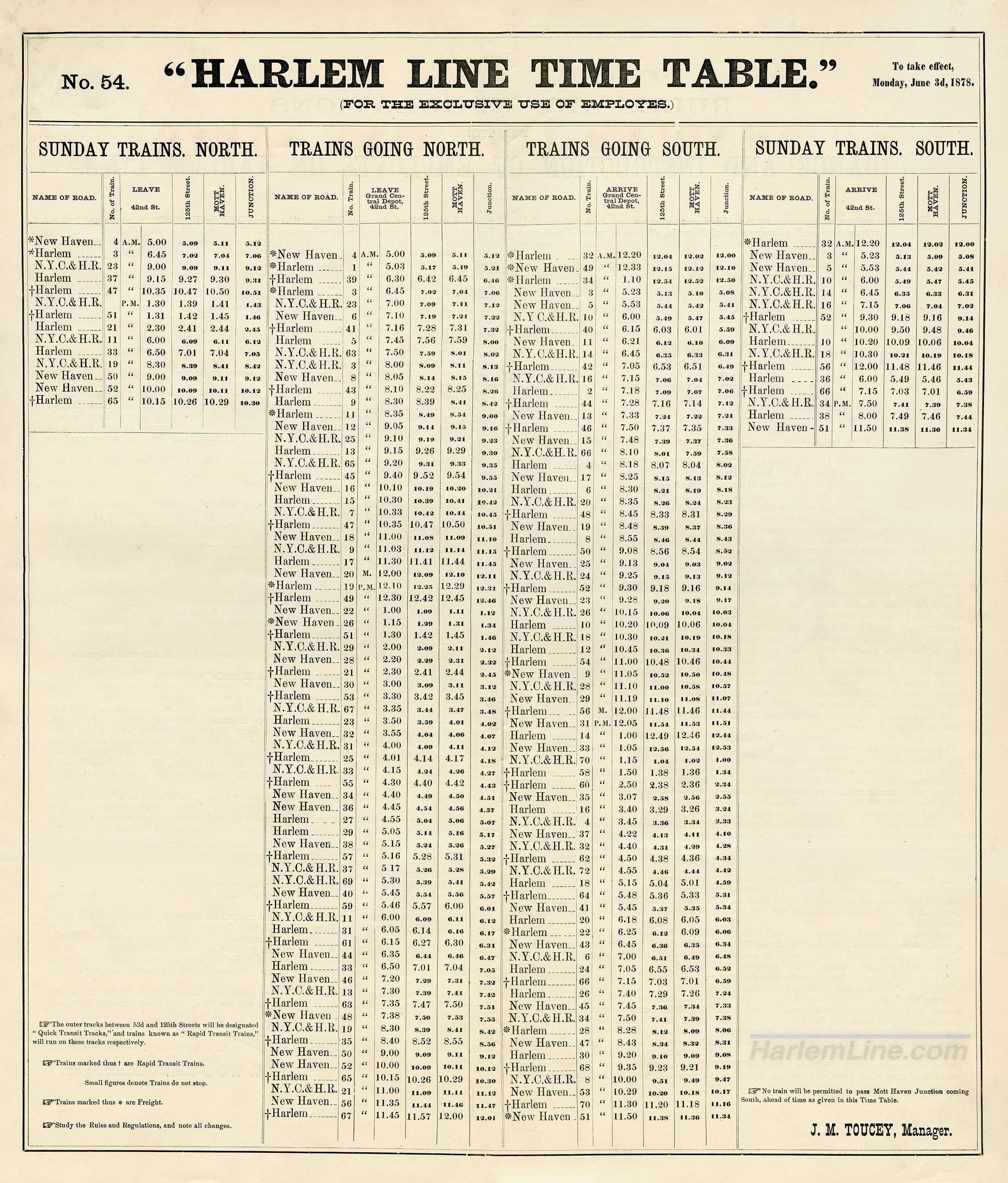In my previous story about the Jerome Park Branch, I mentioned that the next few articles would focus on the changes in the Bronx in the late 1800s. Not only is the time period full of intriguing stories, for the Harlem these years served as a transitionary period from the early history of the line into a history we’re a little bit more familiar with. From a modern lens, it is a bit hard to fathom a time when the Harlem had more trains operated by horse power than locomotives, or that the trains of what is now the Hudson Line didn’t even come to the east side of Manhattan. Although the line had long moved beyond such antiquated technology as the granite rails it was founded upon, things could certainly still be seen as rather archaic. But come the 1870s, things began to change rather quickly…
As a nice primer to the era, today I present a Harlem Line employee timetable from 1878, covering the area from Grand Central to Mott Haven. By this time the Harlem’s street-running trains (many still pulled by horses) in lower Manhattan had become a separate and distinct service, and the Hudson and New Haven had been united with the Harlem in the first Grand Central. You’ll see references to the Spuyten Duyvil and Port Morris Junction, or what we’re more familiar with as Mott Haven Junction today. The story of the SD&PM will figure prominently in our upcoming articles, but the short explanation is that it provided the integral link that brought the Hudson River Railroad into Grand Central Depot, beginning the process of launching that road into prominence, and relegating the Harlem on its own tracks (case in point, when the electric division was established, Grand Central to Mott Haven became part of the Hudson, with the Harlem “starting” beyond that point).
While seeing the times of trains is certainly fascinating, the gold is really in the rules of the road. From Hudson being identified by the color yellow, and the Harlem by green, to the antiquated signaling rules, there’s plenty of delightful little tidbits to find throughout. Roger had not made his big debut yet, it was okay to acknowledge with simply an “all right.” And detonating signals, or torpedoes, served a real purpose beyond sticking them on the rail to celebrate an old timer’s retirement (this yougin’ may have just dated herself…).
Take a read, and let us know in the comments which rules of the road you find most interesting!



